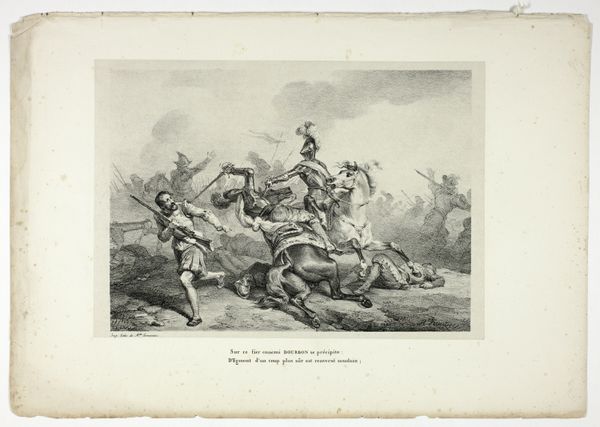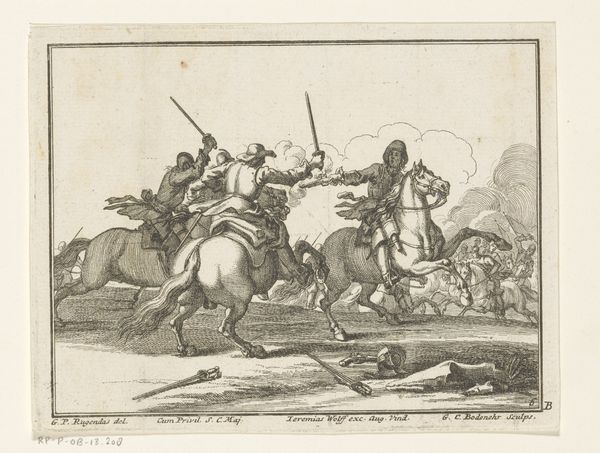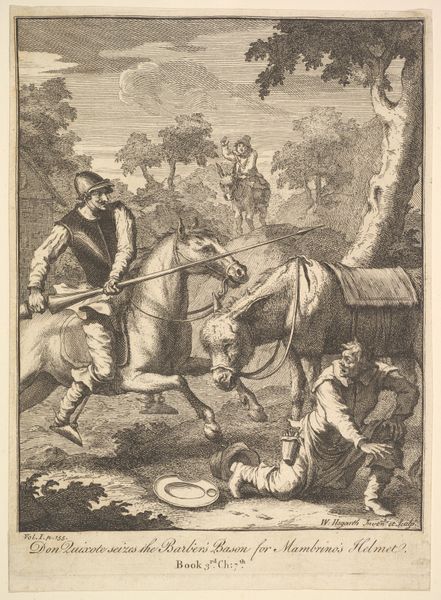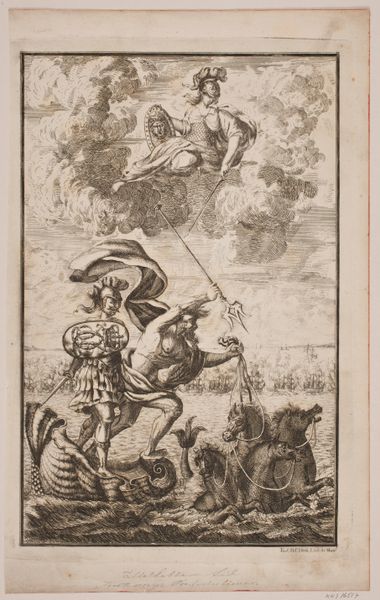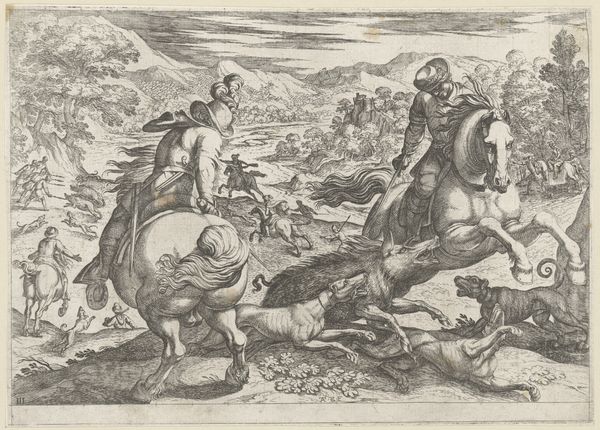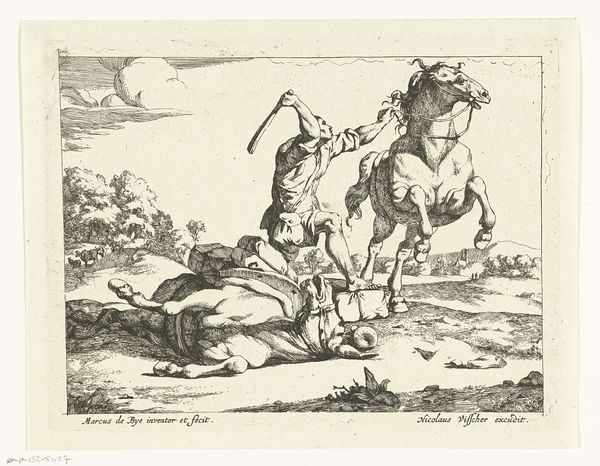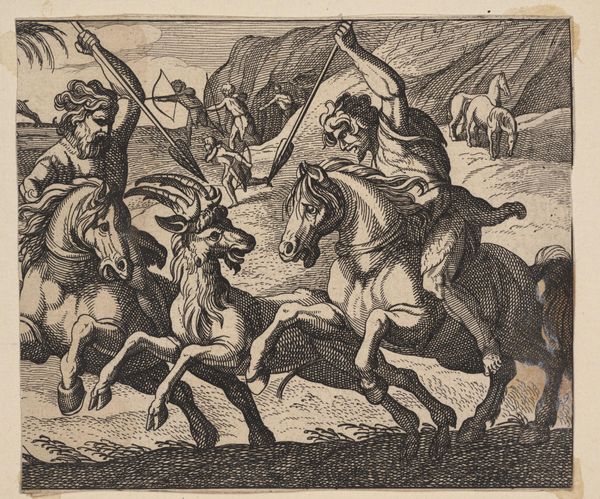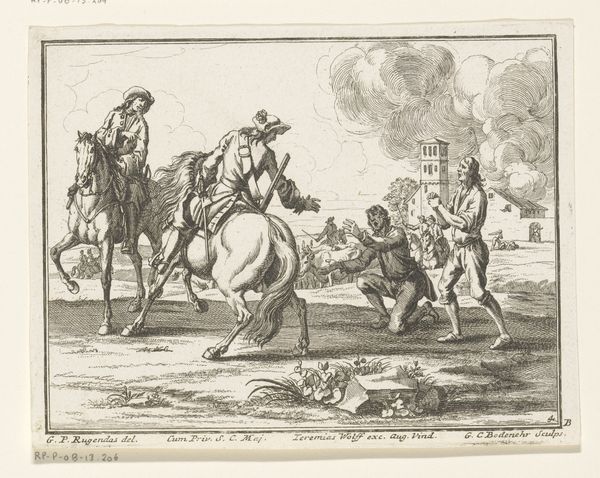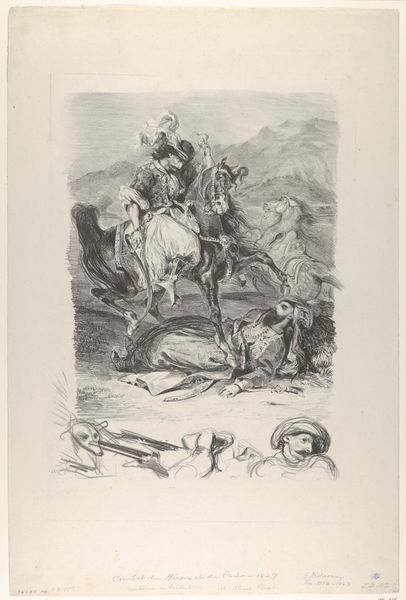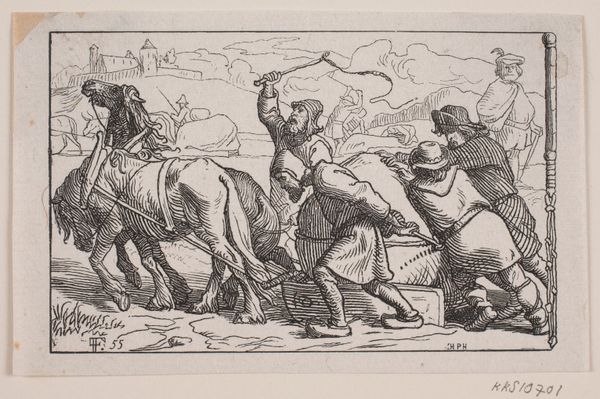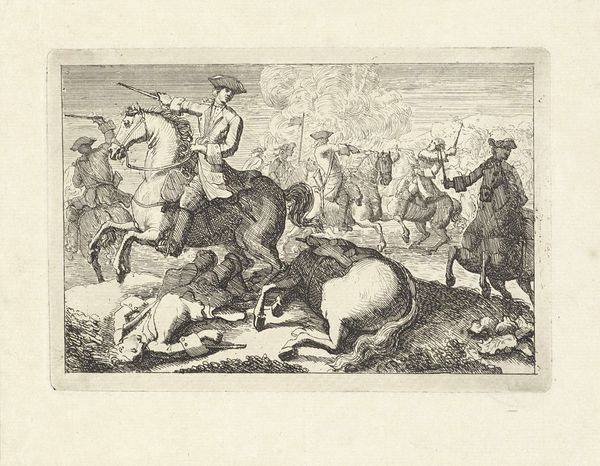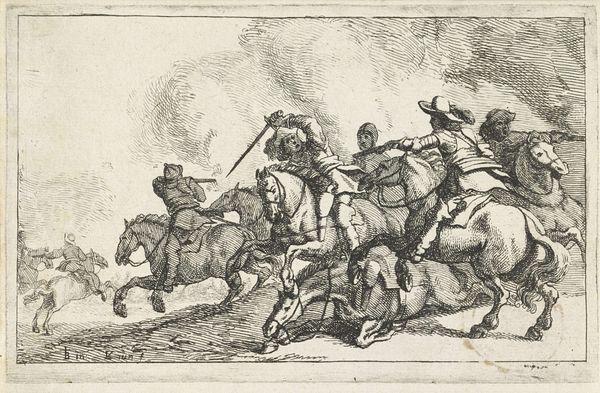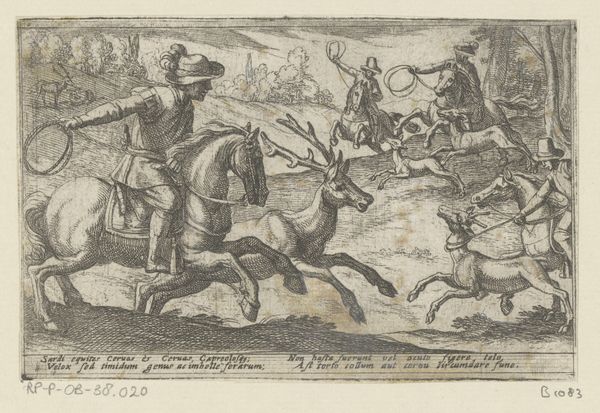
print, engraving
#
neoclacissism
#
pen drawing
# print
#
landscape
#
figuration
#
line
#
history-painting
#
academic-art
#
engraving
Dimensions: height 482 mm, width 650 mm
Copyright: Rijks Museum: Open Domain
Editor: This is Baptiste Gagnereaux's "De woeste stier," created in 1804 using engraving techniques. The scene feels chaotic and dynamic, and there's a palpable sense of struggle. What compositional elements stand out to you in this work? Curator: Note the strategic use of line and form to convey movement and tension. The composition is carefully structured; see how the figures are arranged, guiding the eye from the fallen figures to the dominant bull and onward to the landscape beyond, how that progression establishes both depth and narrative. Editor: I see what you mean about the composition guiding my eye, but what about the meaning, can you get meaning from just the formal elements? Curator: Semiotically, the line work performs much of the burden here. Sharp, thin lines suggest delicacy, whilst thicker, less confident lines form a basis to highlight depth of form. Consider the texture achieved through hatching and cross-hatching which lends depth, but can also denote anxiety in the subjects represented. Does it evoke a sense of balance, harmony, or perhaps disruption and instability? Editor: Disruption definitely seems to be the point. The chaotic lines create that anxious, disrupted mood so evident. Thank you! Curator: And notice how even the most chaotic visual arrangement retains a sense of structured meaning through careful placement and rendering? Editor: Absolutely. Thinking about it this way highlights how intention can be visually embedded into even the wildest art styles. Thanks for opening my eyes!
Comments
No comments
Be the first to comment and join the conversation on the ultimate creative platform.
